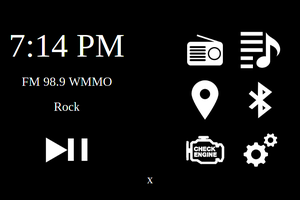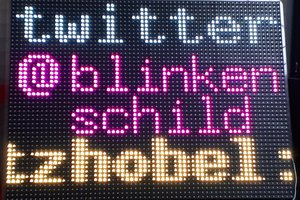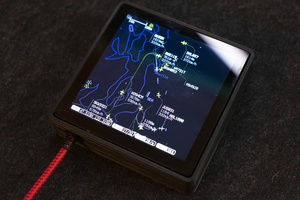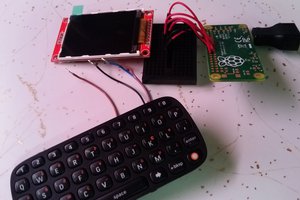This is a project to help me organize my life a little better, but is primary a learning project that will force me to better document things, and force me to learn new skills that I really want to have. This is my first serious project.
I am currently using Microsoft OneNote for all my data organization. That is what gives me the nice "From" links when I post part names. I'm using a Nokia Lumia 1020 for all the photos, and getting as many parts from summitracing.com, dxengineering.com, adafruit.com, amazon.com, and a nearby Microcenter store.
I have many ideas for this that will probably lead to many different versions of this device. Right now, I am trying to get a very basic device together to keep me busy and productive. I really need a good way of managing many very large checklists. I will add to this section whenever I come up with something else worth exploring.
Check the logs often for updates, as that is where nearly all major updates end up. All feedback is welcome, even if you insist on telling me how I can just use a phone app for this. I understand, and do not care. I have my reasons, as stated in the description.
Desired Base Features:
- Manage multiple checklists, flipping through them with a single button.
- Mark items on a list "done" with another button.
- 12 hour battery life.
- Small enough to carry in a pocket everyday.
- Way to boot from USB or properly turn off the Pi from the LCD or a button.
- Store important information, such as addresses, phone numbers, etc.
Desired Additional Features:
- Built in LED flashlight with physical slider hooked directly to battery.
- built in camera for taking picture reminders.
- RGB backlit screen for color coding lists and list items.
- Beeper.
- Vibrating motor.
- Physical silence switch, like the iPhones use.
- Annoying, high pitch beep for messing with people.
- Electronic dog whistle for dealing with random animals and stop barking.
- Simple games to pass time.
- Full size HDMI port.
- Port covers to avoid pocket lint clogs.
- Simple way to add and edit lists from the LCD. Maybe a scroll wheel that scrolls through the alphabet.
- Store and play back media through HDMI using the LCD interface and buttons to control everything
- Rotary switch to change to various different modes of operation: checklist, whistle, camera, alarm clock, etc.
Current shopping list: Totals over $100 just for basic parts and supplies so far.
Auto body filler:
Summit Racing Part Number:UCP-12050
From <https://www.summitracing.com/oh/parts/ucp-12050/overview/>
Raspberry Pi Zero W
From <https://www.adafruit.com/products/3400>
Adafruit RGB Negative 16x2 LCD+Keypad Kit for Raspberry Pi
From <https://www.adafruit.com/products/1110>
Adafruit DS3231 Precision RTC Breakout
From <https://www.adafruit.com/products/3013>
Adafruit Raspberry Pi Camera Board Case with 1/4" Tripod Mount
From <https://www.adafruit.com/products/3253>
Tiny OTG Adapter - USB Micro to USB
From <https://www.adafruit.com/products/2910>
Pimoroni Zero LiPo
From <https://www.adafruit.com/products/3196>
Adafruit Micro Lipo w/MicroUSB Jack - USB LiIon/LiPoly charger - v1
From <https://www.adafruit.com/products/1904>
USB LiIon/LiPoly charger - v1.2
From <https://www.adafruit.com/products/259>
Lithium Ion Polymer Battery - 3.7v 2500mAh
From <https://www.adafruit.com/products/328>
1 Watt Cool White LED - Heatsink Mounted
From <https://www.adafruit.com/products/518>
Vibrating Mini Motor Disc
From <https://www.adafruit.com/products/1201>
Thru-hole 5-way Navigation switch
From <https://www.adafruit.com/products/504>
Tactile Switch Buttons (6mm tall) x 10 pack
From <https://www.adafruit.com/products/1490>
Mini 8-Way Rotary Selector Switch - SP8T


 pizzaMan5000
pizzaMan5000
 overflo
overflo

 j0z0r pwn4tr0n
j0z0r pwn4tr0n
Personally, the GAIN for me would be a list that is NOT permanently connected to network, and therefore it is less likely to become a privacy concern. A portable device with powerful encryption is very beneficial to me...
My cell phone is sync'ed with Email, and every list I've ever created on my phone then became a permanent record in my Gmail. Annoying.